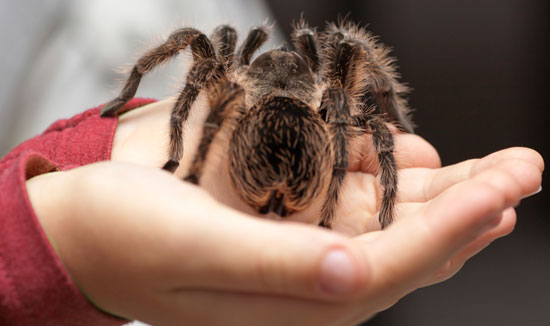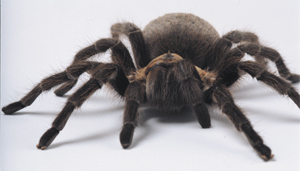How to Keep Spiders as Pets
Spiders can make fascinating pets. Here are a few steps to get you started keeping spiders.

Step 1: Catch a spider
Spiders are all around us, indoors and out, so they’re not hard to find. Some species can bite and a few are venomous. Learn about dangerous spiders in your area before heading out. It’s easy to safely catch a spider by using a small jar. Gently coax it into the jar using the lid. Spiders will eat each other, so keep only one per jar.
Step 2: Prepare a cage
Large spiders do well in the inexpensive plastic terrariums available from pet stores. Smaller ones can be kept in jars or plastic containers if air holes are drilled into the lid or sides. Be sure the holes are small enough to prevent escape.
Potting soil makes good cover for the cage bottom. Sticks, dead leaves or artificial plants provide structure for hiding, climbing and webbing.
Step 3: Water
Depending on the size of the spider, anything from a plastic bottle cap to a small bowl can serve as a water dish. Spiders also drink water sprayed on webbing, but you should never allow the cage to become damp.
Step 4: Feeding
Offer insect prey once or twice a week. Crickets are available from pet shops, or you can collect insects outdoors if no insecticides have been sprayed in the area.
Step 5: Observing
Watch your spider and take notes on its behavior. You won’t believe what happens in the spider’s web until you’ve visited it yourself!
PREFERRED PETS
 Not all spiders do well in captivity. Active hunters are usually easier to keep than web builders. Here are a few that make good pets.
Not all spiders do well in captivity. Active hunters are usually easier to keep than web builders. Here are a few that make good pets.
Tarantulas: Some species exceed 10 inches in legspan. They’re by far the most popular pet spiders and can be bought in pet stores.
Wolf Spiders: Some can be more than three inches in legspan. Large specimens do best in terrariums with lots of floor space.
Jumping Spiders: Although small and rarely exceeding half an inch, their jumping ability is amazing. Many species are brightly colored and can easily be kept in jars.
Fishing Spiders: In captivity, these large spiders appreciate vertically arranged pieces of bark for climbing. They’re very fast, so use caution when capturing them.
Grass Spiders: These spiders build funnel-shaped webs in grass, bushes and on buildings. In captivity, they will build extensive webs inside their cage.
LEARN MORE: Click here to see photos of a spider expert’s seven favorite spiders
I don’t need a fancy terrarium in my house… My house IS the terrarium! My family named the spider “Itzy Bitzy”. He’s just a normal house spider… he just came in one day! Also, he appears in many places. The good thing about him is that he keeps down the population of any bugs around here! 🙂 😀 😛 😆
i dont like
I have a little box for strawberries its 10inches long and 4 inches high could i put a spider in this
I am going to try and catch a barn spider, my dad says there are some around here.if I do, what should I feed it?ants?flies?roly-polys?grasshoppers?(those are the main bugs around here.
best thing that there is to do with spiders is 1 scare people with them 2 let them run around on your arm
don’t put two different kinds of jumping spiders in the same container. I did that once and the bigger one ate the smaller one.
i have caught 17 different speicies of spider they are in a huge tank so far there a no problems will they kill eachother
spiders are so cool
always let your spider have air
I found two small yellow spider nests in my back yard and I’ve put them in a plastic container. One nest has hatched and there are hundreds of orange spiders. I’ve caught a fly too and put it in there with them. This should be fun! Haha hope they last a while. I know nothing about spiders 😮